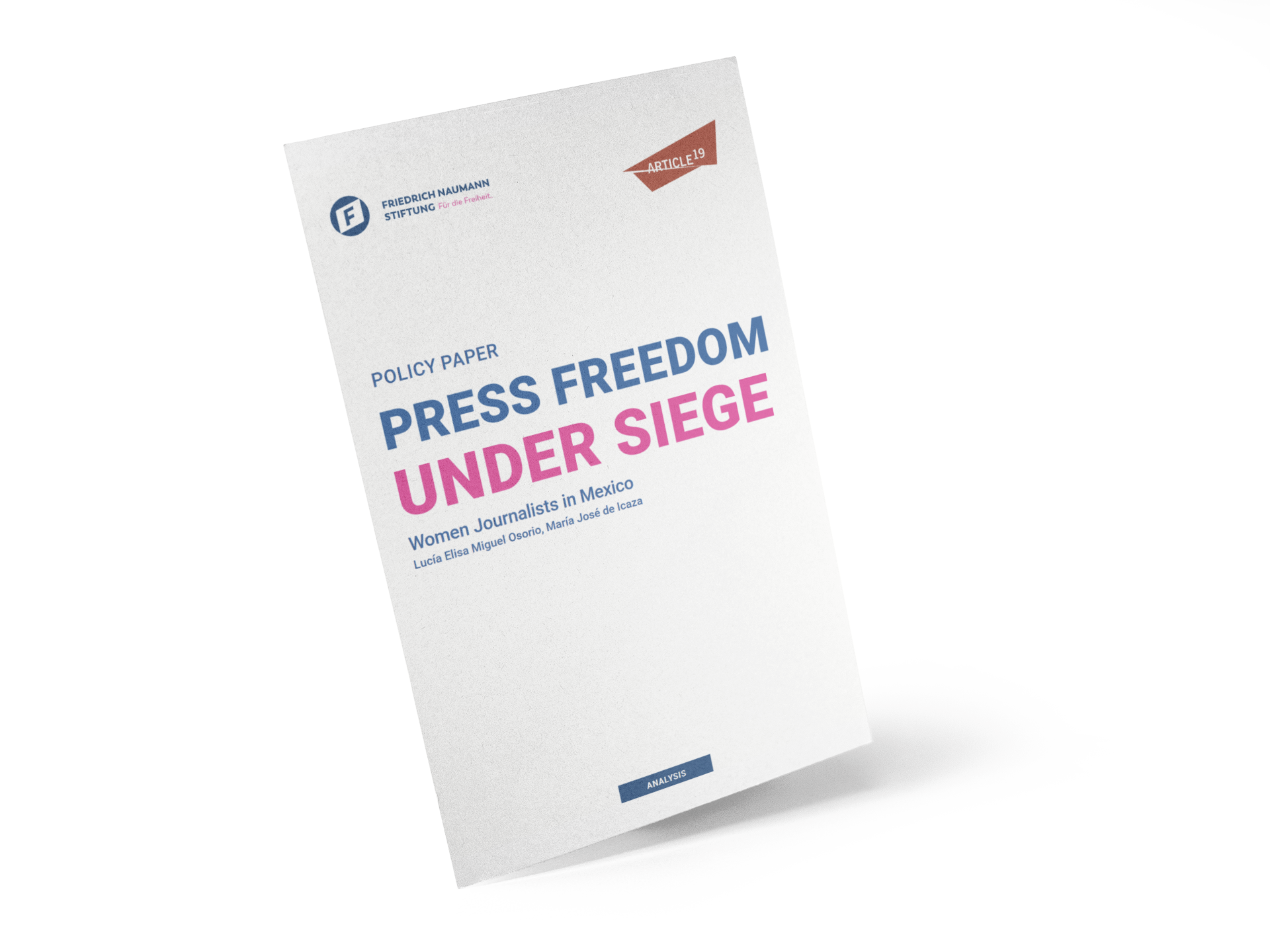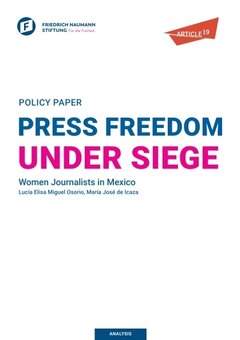Publication
Press Freedom Under Siege: Women Journalists in Mexico

The human rights violations in Mexico pertain to the right to freedom of expression and access to information, of both journalists and society in general. In Mexico, journalists face systematic practices of violence and intimidation. These types of practices include those used by the government to silence journalists and misinform the public (through control and management of information of any kind and of media outlets), and those perpetrated by private actors and members of organized crime groups. According to figures by ARTICLE 19 (an independent, non-partisan organization that promotes and defends the advancement of the rights to freedom of expression and access to information for all people, per the highest international human rights standards), on average, every 13 hours a journalist or media person is assaulted in Mexico for carrying out their profession in the country. Undoubtedly, violence against the press has increased each year. ARTICLE 19 started tracking attacks on journalists in 2007. In 2022, it registered 697 attacks against the press, turning it into the most violent year in its recordings.
The violence against the press in Mexico has a significantly different impact on media depending on the intersectional dimension, social categories, and context of each individual. Ethnicity, gender identity, sexual orientation, or socioeconomic status are characteristics prone to accentuate the risks and impact of human rights violations. Violence against women journalists in Mexico is grounded on heteronormative and patriarchal understandings and practices. Women journalists are infringed for appropriating their discourse and making the media their place of enunciation, especially when providing journalistic coverage on topics considered more “masculine” such as politics, corruption, security, sports, science and economics. Moreover, women in Mexico are often attacked for their gender, socioeconomic status, ethnicity, age, and sexual orientation, facing racism, and sometimes even exoticization of their identities.
Through resilience, and as a self-managed defense response, strategies have been developed in various parts of Latin America, especially from the journalistic community and civil society organizations, to confront the many obstacles that women journalists face during their careers. At the local level, several journalist networks, civil society organizations and supporters of victims had to develop strategies for individual and collective self-protection of women journalists. These strategies are mainly focused on gender, as a reaction to the evident lack of protection, insufficiency, and disinterest of the state institutions in the region. Unfortunately, the shortsightedness with which institutional responses have been developed has not been able to provide neither justice nor reparation. In the case of Mexico, the State has not managed to change the context of violence. Moreover, impunity levels remain at high levels, leading to the continuation of materializing violence into crime.
Any policy solution that aspires to be sufficient needs to consider the distinct situations that involve violence against women journalists in the physical, labor, digital, economic, and psycho-emotional spheres. Hence, it must recognize the intersections that each one faces to identify how individuals are affected according to their experiences on different degrees of privileges and states of oppression.

